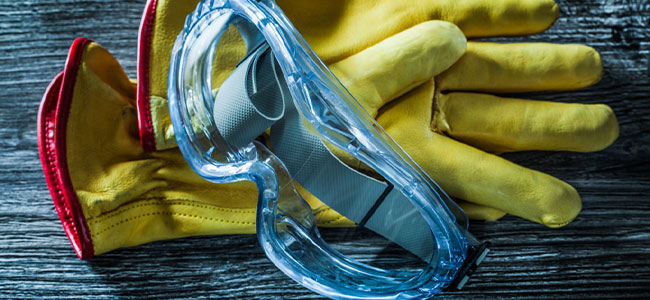
Redefining Eye Safety: The Rise of Modernized Safety Goggles
How new approaches to product design are striking a balance between style, comfort and enhanced protection in the workplace.
- By Vincent Azibert
- Oct 11, 2023
Walk around any job site and it’s likely you’ll see more workers switching to goggles over safety glasses. While safety goggles are certainly not a new concept, recent innovations aim to make them more comfortable to wear, which is fueling category growth as more workers shift to the additional protection that goggles provide.
Today’s modernized safety goggles provide a tighter, sealed fit and are ideal for workers who may find themselves in environments that produce flying debris and projectiles that could potentially be harmful to the users’ eyes.
Beyond the framework of meeting and even exceeding applicable safety standards, we are seeing new goggle designs in the market that focus on improved fit, comfort, and customization features to cater to a diverse range of users.
Because every face is different, there has been a strong commitment to developing goggles aimed at fitting a much wider range of users, spanning from those with various facial features such as large or narrow faces, low or high cheeks and shapes regardless of gender.
Giving Goggles a Second Look
Industry engineers are striving to make today’s industrial goggles both attractive and more comfortable, without compromising safety and protection. While safety obviously remains the most critical feature of PPE eyewear, it must also meet user style expectations. Many workers think about style (how do I look?), comfort (how do I feel?) and the impact goggles have on their work (how do I see and does my PPE negatively impact my ability to do my job?). We found that the products offered in the past do not quite tick all these boxes and felt it was important to enhance the design and functionality of this segment of safety goggles.
The newest goggle designs in the market incorporate cushioned fit technologies, providing more comfort features where the soft frame that attaches to the main frame includes comfort bellows that enable the product to self-adjust to virtually any face shape or head size. This dramatically reduces the risk of discomfort and pain points while securing the tightness of the goggle on the face.
At the same time, however, industry engineers have been working hard at solving a wide range of problems that go beyond just comfort and fit.
There are various situations where wearing goggles is important, but they do not all include exposure to the same risks. For instance, while tightness is usually a common need for those who select goggles over glasses, some workers may be exposed only to liquid splashes while others would need to also be protected against dust or even gas hazards, thus requiring a fully sealed and tight eyewear solution.
It is also important to consider the environment in which workers operate in terms of heat and humidity. In some cases, a well-vented goggle with airflow will provide better comfort than a fully sealed one. So, the industry has been challenged with a need to develop a variety of use-specific solutions. Some manufacturers are even color-coding use-specific goggles. This not only makes it simple to pick the right protection for a particular job and environment, but it also enables the production supervisors or safety managers to quickly identify if someone is not wearing the appropriate protective equipment.
Some of the use-specific jobs that goggles are being specifically built for include meeting the needs of those working around construction sites, dangerous gasses, and inflammables, those working around solvents and acids, as well as goggles that meet the specifications for welding.
For those working in the most extreme conditions, where it’s not uncommon for projectiles to be a cause of concern, there are now options for a face shield that will attach to the goggles to provide a full face protection system. Designed for users who work in a variety of conditions, these new face shields can be easily attached before performing a task requiring full face protection.
These goggles with attachable face shields provide an extension of the protection against impact and projections (particles, liquids, etc.,) to the lower part of the face, while keeping a tight protection on the eye area and they are intended to be easily removable with a standby position (up) when not in use.
Evolving With Worker Needs
The increased use of goggles is linked to the increase in safety awareness at the work site. What we clearly see in the market is an increased demand for products that provide extra protection against various hazards beyond simple, frontal, or lateral impact. In some environments (for instance, construction sites, OGP or chemical plants), or for some applications (drilling, cutting, welding, milling, handling chemicals, etc.), tight eye protection is key to safety and workers who naturally move towards sealed eyewear (glasses with a gasket that provides a reasonable level of tightness) or safety goggles which provide the ultimate level of tightness and vision combined.
The role of PPE eyewear specialists is not to move people away from safety glasses towards goggles. It is to make sure that people use the best-suited protection for their job, with protection that covers the risks they are exposed to and that enables them to perform their jobs safely and effectively.
If you haven’t tried safety goggles recently, it might be worth checking them out at a PPE store near you.
This article originally appeared in the October 2023 issue of Occupational Health & Safety.